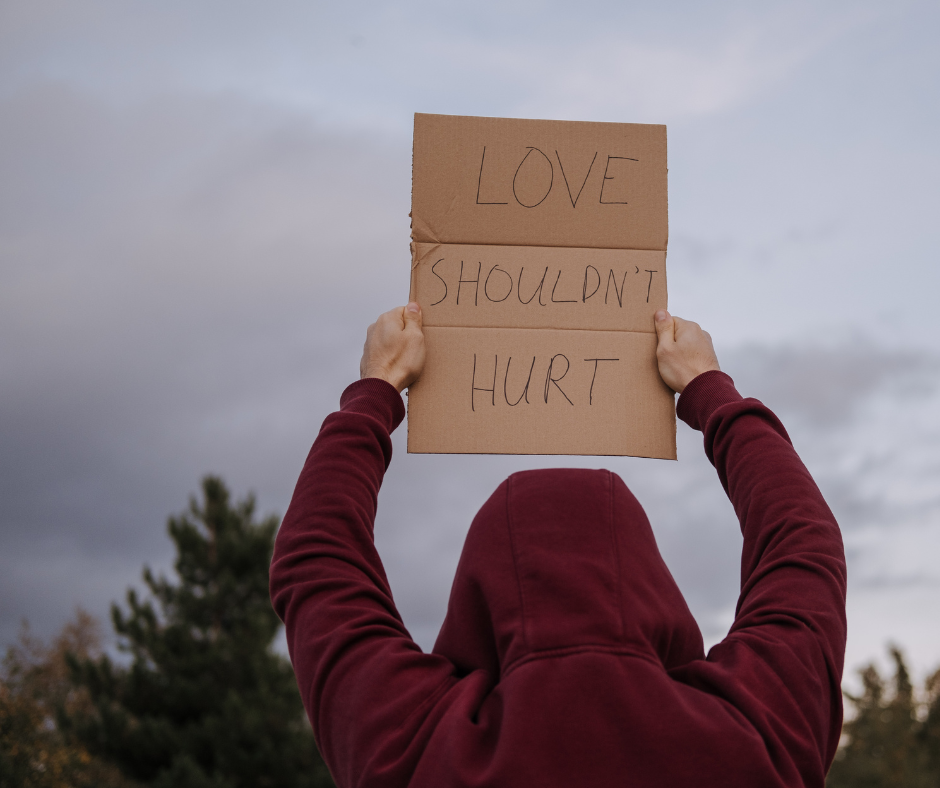On Wednesday I learned that New South Wales has no forensic domestic violence specialists outside of Blacktown and that women fleeing domestic violence can arrange to talk to police in place they feel safe. I didn’t learn these facts from news reports and I’m not likely to.

By Jacquelene Pearson
I was invited by the Central Coast Domestic Violence Committee (CCDVC) to speak at their first 2024 meeting about the ethics of reporting on family and gendered violence. I learned more about the challenges and priorities of the police and many other agencies working to stop domestic violence in that two-hour meeting than I’ve ever learned about the issue from news reporting.
Jarrod Luck, Domestic Violence Coordinator for the Tuggerah Lakes Police Command, addressed the meeting about the new NSW coercive control legislation and how police were being trained across the command to implement the new laws.
He also spoke about a four-day, state-wide DV initiative aimed at identifying high-risk targets, explaining that a history of choking and strangulation were a strong indicator of high-risk and they were two acts of extreme violence that resulted in more injuries and deaths than most other types of gender-based assault or attack.
He explained that police are happy to meet victims wishing to report DV crimes where they feel safe and comfortable – a park or a café, for example. I thought this was a revelation as it must be intimidating and confronting for victims to attend a police station to report a crime.
Sgt Luck reminded the many DV specialists in the room that NSW was supposed to have a dedicated Domestic Violence Court and specialist DV prosecutors – neither initiative has come to fruition. Everyone is doing their best to work with the system they have, he concluded, adding that ultimately he remains in the job because he feels he can make a difference every day.
The role of the media
Former Australian of the Year, Rosie Batty, has said: “The media are uniquely based to help stop violence before it starts”. That’s a very generous statement on Rosie Batty’s behalf.
The CCDVC’s invitation to speak about ethical reporting of DV prompted me to do some research about how well, if at all, my profession, journalism, was taking advantage of its “unique base” to make a positive contribution to preventing domestic violence.
The numbers
My first step was to find some key statistics on domestic, family and gendered violence.
According to Our Watch https://www.ourwatch.org.au/quick-facts/
- On average, one woman a week is murdered by her current or former partner.
- An average of 15 women/day are hospitalised due to family and domestic violence.
- 1 in 3 women (31%) has experienced physical violence since the age of 15.
- 1 in 5 women (22%) has experienced sexual violence since the age of 15.
- 1 in 2 women (53%) has experienced sexual harassment in their lifetime.
They are such damning statistics and we need to be reminded of them regularly. As a public interest journalist, I believe I have an obligation to keep quoting and reporting those statistics until enough people get the message that the depth and width of this problem is unacceptable and must change.
Deaths
“On average one woman a week is murdered by her current or former partner”. That’s an average of 52 women in Australia every year. Can that possibly be true?
According to Destroy The Joint and Counting Dead Women Australia, by 2 February 2024, six women had already been murdered by their current or former intimate partner. The one death a week on average is spot on. I just checked the Counting Dead Women facebook page and we are now up to seven women on 8 February.
Total murders of women by partners for 2023 was 64.
Case study
So are we, the media, doing the best possible job of reporting on this national issue of extreme public importance? Well, no.
I decided to do an assessment of how one woman’s death had been reported by the Australian news media, hoping to identify and explain examples of excellent reporting and not-so-great reporting. I didn’t find much of the former and a great deal of the latter.
To adhere to my own rules about ethical reporting, I am not going to name the woman or identify where she lived or how many children she had. I will de-identify any photos I publish to demonstrate my central observations.
Victim number 4 of 2024 was found dead in a home unit at around 5.30pm after her former partner had visited the local police station to confess to her killing. The police withheld information about how the woman was killed. They did report that there were children present in the home when the crime took place.
The perpetrator was charged with murder (domestic violence) and remanded in custody. He’s had one court appearance and won’t come before the court again until March.
The news coverage
The coverage of this tragedy was simplistic, exploitative and generally poor. The main slant put on the story was to emphasise the victim and hardly mention the perpetrator. I did a simple google search of the victims name and then the perpetrator’s name.
Reports based on the victim’s name filled about six google search pages. It was basically the same story, which included key facts from the police report, regurgitated by news platforms across the nation.
The basic story was “dressed up” with information taken from the victim’s social media accounts.
Intimate details
Prior to the world wide web there was a practice in gutter journalism called the death knock. If you wanted to get a front-page byline in a tabloid paper or on a low-brow current affairs program, you needed visual content and there was only really one way to get it.
You had to march up to the front door of the family of the deceased and take advantage of their shock, trauma and utter vulnerability by sticking a camera in their face and asking them to comment. The lowest of the low would go as far as stealing a photograph of the deceased from the unsuspecting and grieving family.
Now performing the same breach of the victim’s privacy and dignity is as easy as trawling their social accounts. It’s all there in the public domain – photos, videos, quotes from posts, intimate details of the victim’s life – highs and lows. No permission required from anyone because the information has been published. Sometimes you’ll see attribution of the material, something like “Source: Facebook”.
In the case of Victim Number 4 of 2024, one photo montage included the usually dark-haired woman with blonde hair, a glass of white wine in her hand, ample cleavage and tattoo. Most of the other photos were casual – in her gym gear, in front of the washing machine. The imputation conveyed by the one “blonde” photo was that the victim was the “type” of woman who, perhaps, “had it coming” – stereotypical victim blaming that I hoped the modern news media may have moved past, but there it was.

Inset in the corner of the larger photo, the publication had also used a photo of the victim with her children. Their faces were pixelated but they were in school uniform. This family lived in a small town. It would have been easy to identify the children from that photo if cross referenced with the information about the street where the murder occurred.
The use of those photos is a blatant example of unethical reporting and a complete breach of the woman’s dignity and her children’s privacy and need for protection.
Only the names change
An examination of how the death of Victim Number 4 of 2024 was reported by news journalist revealed that the media has a “template” or cookie cutter approach to reporting domestic violence. The first story, based on the police report, is about the poor woman who has been killed and her children. The culprit may get a small mention.
The follow-up story is usually about tributes pouring in from the community, with quotes from neighbours and friends interviewed or even lifted from social media comments and posts.
Next we have the story about a launch of a gofundme campaign or other fund raising initiative to “help” the survivors of the traumatic crime or pay for the funeral.
Then there’s silence. The 24-hour news cycle moves on. There will be no further examination of domestic violence until the next heinous crime is committed and then we will simply repeat the cycle.
Reporting about the culprit is limited by the rules of sub judice and contempt of court. A journalist can go to goal if they report in a way that could “subvert the course of justice” and jeopardize the culprit’s right to a fair trial – even if, as in the case of Victim Number 4, the culprit has confessed to the crime.
Any positives?
The journalists covering Victim Number 4 did do some things right. All stories contained some information about where to go for help with domestic violence. One publication also included a trigger warning at the top of the story, which is commendable.
Only one publication focused on the culprit. Their story was about the man charged with murder – this approach was refreshing.
Solutions?
When I started this exercise, I wanted to believe that my profession already had standards and guidelines in place to encourage responsible and ethical reporting of domestic violence. I found existing standards devoid of guidance about how to responsibly report domestic, family and gendered violence.
The Media Entertainment and Arts Alliance (MEAA), for example, has the Journalist’s Code of Ethics. It is mainly about telling the truth, avoiding bias and not accepting bribes. The MEAA also has guidelines on reporting hate speech and LGBTIQA+ issues but nothing on domestic violence.
Fortunately, Our Watch, has put together guidelines on reporting violence against women
The key takeaways from the Our Watch guidelines are: Safety first; Name it; Keep the perpetrator in view; Be respectful; Reflect the evidence; Use appropriate imagery; Consult experts; and Include support options.
My analysis indicates that most journalists, editors and news outlets have not read or implemented the guidelines. They get a score of one out of eight because they include support options and that’s not good enough.
The challenge
Rosie Batty has set a challenge for the media – how does the news media cover this issue before the next woman is killed in a way that starts to prevent crimes?
I don’t have the answers but I think, as a profession, we need to aim for: more stories about perpetrators and why they do what they do; more interviews with experts with a preventative brief along with practical steps to help both victims and perpetatrators.
If we are serious about tackling this issue, it needs to be in the news, every day, not only when a crime occurs or on special occasions like International Women’s Day.
We must start respecting people’s privacy and dignity – living and deceased. We know better than to take material from social media – it is not a reliable source. If survivors do want to tell their stories, that’s great but we need to make sure they stay in control of the narrative and the messaging.
This can be achieved by mixing survivor stories with expert commentary. It can also be achieved through the use of new channels – podcasts, reels, webinars, where the storyteller has complete control and power over the narrative.
There must be more stories about domestic violence. Reach and frequency are the core tools of the effective communicator, irrespective of whether they are using youtube or an old-fashioned newspaper to get their story out and make an impact on public thinking and behaviour.
Journalists need to stop being so lazy and seek out the experts, the front-line workers who spend their time combating this societal disease. DV experts are not necessarily going to have the time or skills to push their stories out – they do, after all, have full time jobs helping victims.
Major news outlets need to seek out training for their journalists on how to best report DV and that training needs to be compulsory.
Finally, we need to all take responsibility for honouring the victims of DV by not giving in to silence. We need to keep this issue on the front page so that the public and our decision makers learn that there must be a concerted effort to keep looking for solutions.
Family and domestic violence support services:
If you need help immediately call emergency services on triple-0
- 1800 Respect National Helpline: 1800 737 732
- Women’s Crisis Line: 1800 811 811
- Men’s Referral Service: 1300 766 491
- Lifeline: 131 114


